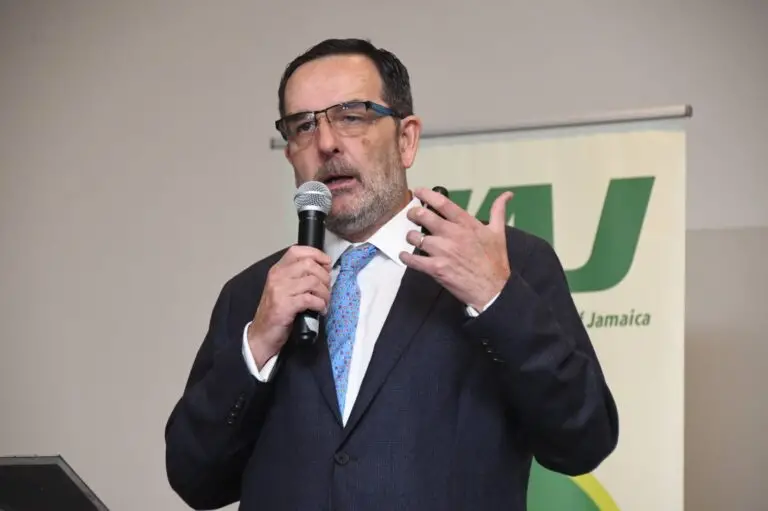Recent upheavals in global shipping routes have created both obstacles and avenues for growth in Jamaica’s maritime sector. As highlighted by Rodrigo Olea, Chief Operating Officer at Kingston Wharves, Jamaica stands to benefit significantly from its strategic location, emerging as a pivotal player in the international shipping arena.
At the Institute of Chartered Accountants of Jamaica’s 2024 business conference, Olea shared alarming insights into the current challenges facing global shipping. “Over the past year, Houthi Rebels have targeted around 130 vessels in the Suez Canal region,” he stated. This situation has led shipping companies to incur substantial costs as they reroute vessels, steering them from China to Europe via the longer Cape of Good Hope route, extending transit times by 8.5 days.
This shift in shipping patterns has resulted in a surge in vessel usage, with a notable 24% increase in shipping capacity, translating to approximately 3.3 million twenty-foot equivalent units (TEUs) more than the usual demand. The Suez Canal, which typically relies on just 18% of the global fleet, is now experiencing significant diversions as shipping lines seek alternative routes. “If we could channel those 3.3 million TEUs to Jamaica, Kingston’s ports would be fully occupied in roughly 20 hours,” Olea enthusiastically remarked.
Olea illustrated the evolving shipping dynamics with a visual presentation that compared past and present maritime activity. The pre-crisis map of 2019 depicted heavy transshipment traffic in the Suez Canal, but today’s data shows concentrated shipping activity shifting toward the west coast of Africa due to the recent route changes.
However, the maritime industry is still grappling with the repercussions of financial pressures exacerbated by the COVID-19 pandemic. Shipping lines, which have faced unprecedented challenges such as port congestion and blocked routes, are now passing their increased operational costs onto exporters and importers. Despite these hurdles, major shipping companies reaped enormous profits during this turbulent period. Between 2022 and 2023, 12 leading shipping lines, which manage 87% of global container capacity, reported a staggering $330 billion in operating profits, nearly tripling the global GDP for that period. This financial boon has prompted these companies to diversify, aiming for greater control over the entire logistics chain, from distribution to transportation services.
Olea commented on this trend, saying, “These companies are positioning themselves to serve as a single vendor from the factory directly to consumers’ doorsteps.”
Further complicating the maritime landscape are challenges posed by the Panama Canal. A severe drought between 2022 and 2024 limited operations, reducing the daily transit capacity from 36 ships to just 24. Although recent rainfall has allowed the canal to return to its regular operating capacity, this episode underscores the vulnerabilities inherent in global shipping networks. Given that around 80-90% of the world’s goods are transported by sea, the significance of maritime trade is clear. According to Olea’s research, maritime trade accounted for $22 trillion of the global GDP, which was valued at $102 trillion in 2023, constituting 21.6% of global economic activity. The U.S., China, Japan, India, France, the U.K., and Canada are key players in this trade.
Despite facing ongoing challenges, the maritime sector has shown resilience, with a 3.2% compound annual growth rate over the past 32 years, signifying its critical role in global commerce. Nevertheless, new disruptions loom on the horizon, including volatile fuel prices stemming from ongoing conflicts in the Middle East. This volatility not only affects sourcing but also complicates shipping logistics, as aging port infrastructure and limited space contribute to congestion. Ships can face extended waiting times, leading to escalating costs.
To successfully navigate these complexities, Olea emphasized the importance of strategic planning for shipping companies. He advised, “Establish long-term contracts and create inventory buffers. Overstocking, once seen as a negative, can now serve as a crucial strategy. Regularly review sales forecasts and collaborate with logistics partners, such as Kingston Wharves, to optimize operations.”
As Jamaica’s maritime sector faces an uncertain future, adapting to these evolving global dynamics will be key to ensuring its growth and sustainability in the ever-changing landscape of international shipping.

